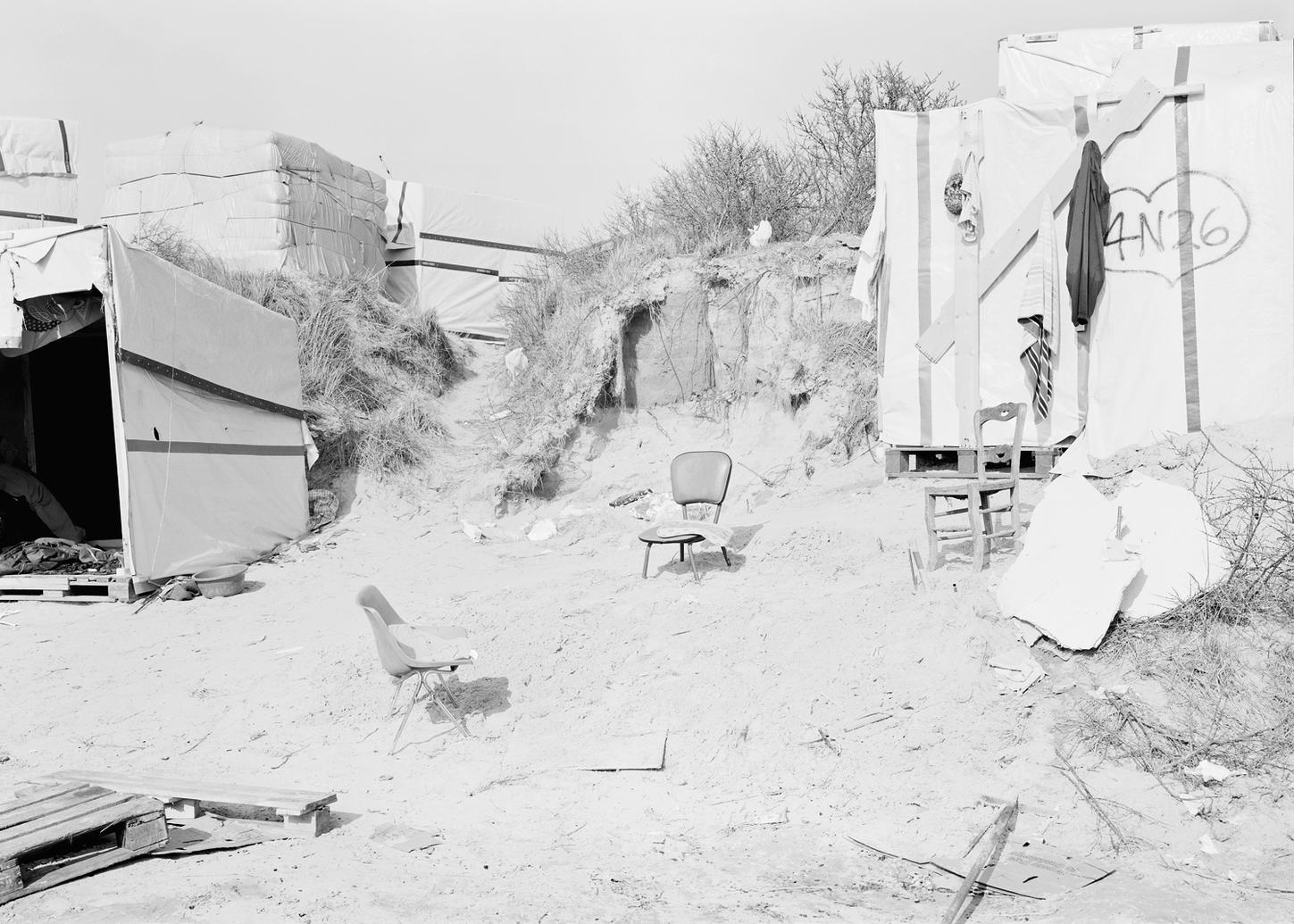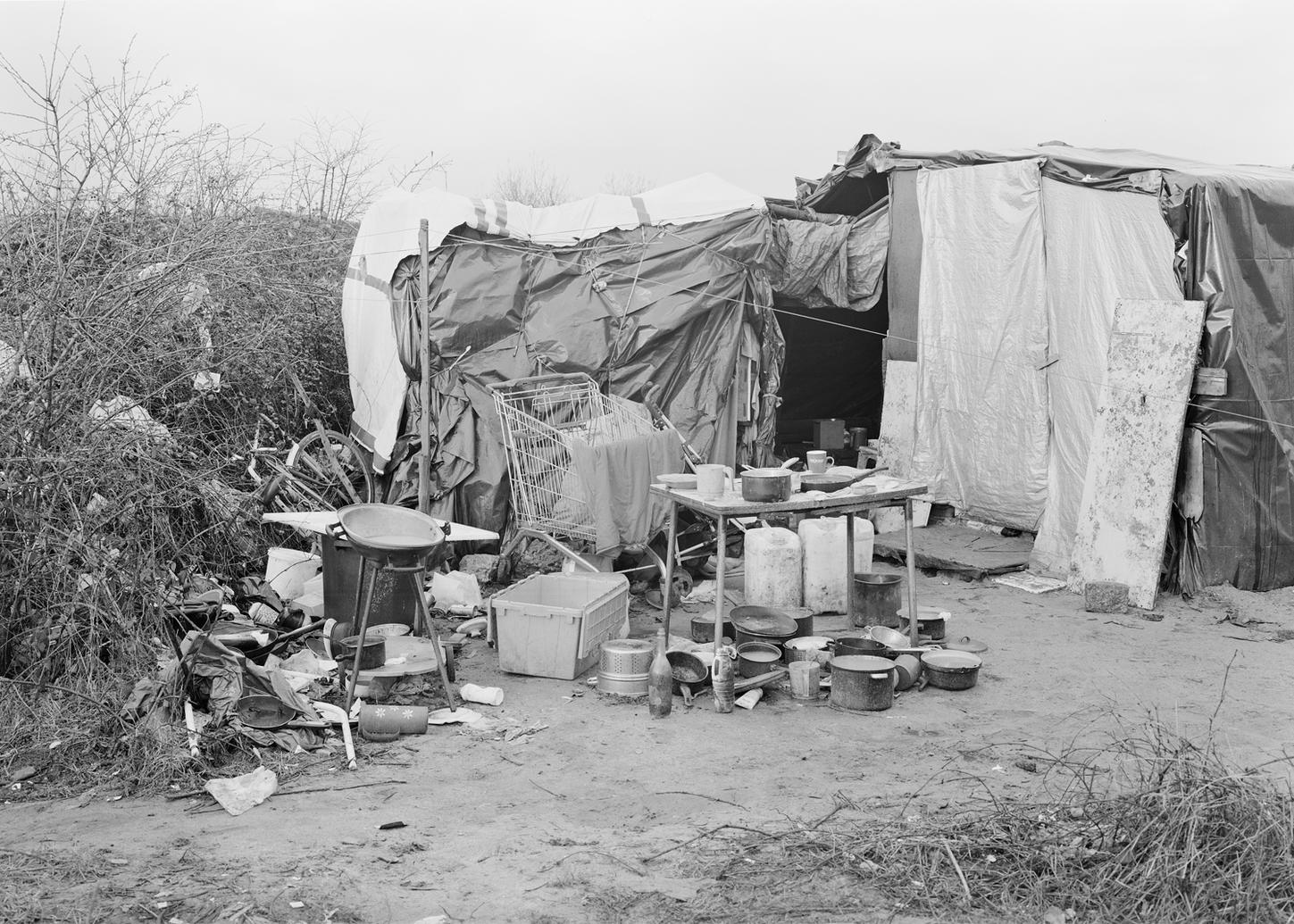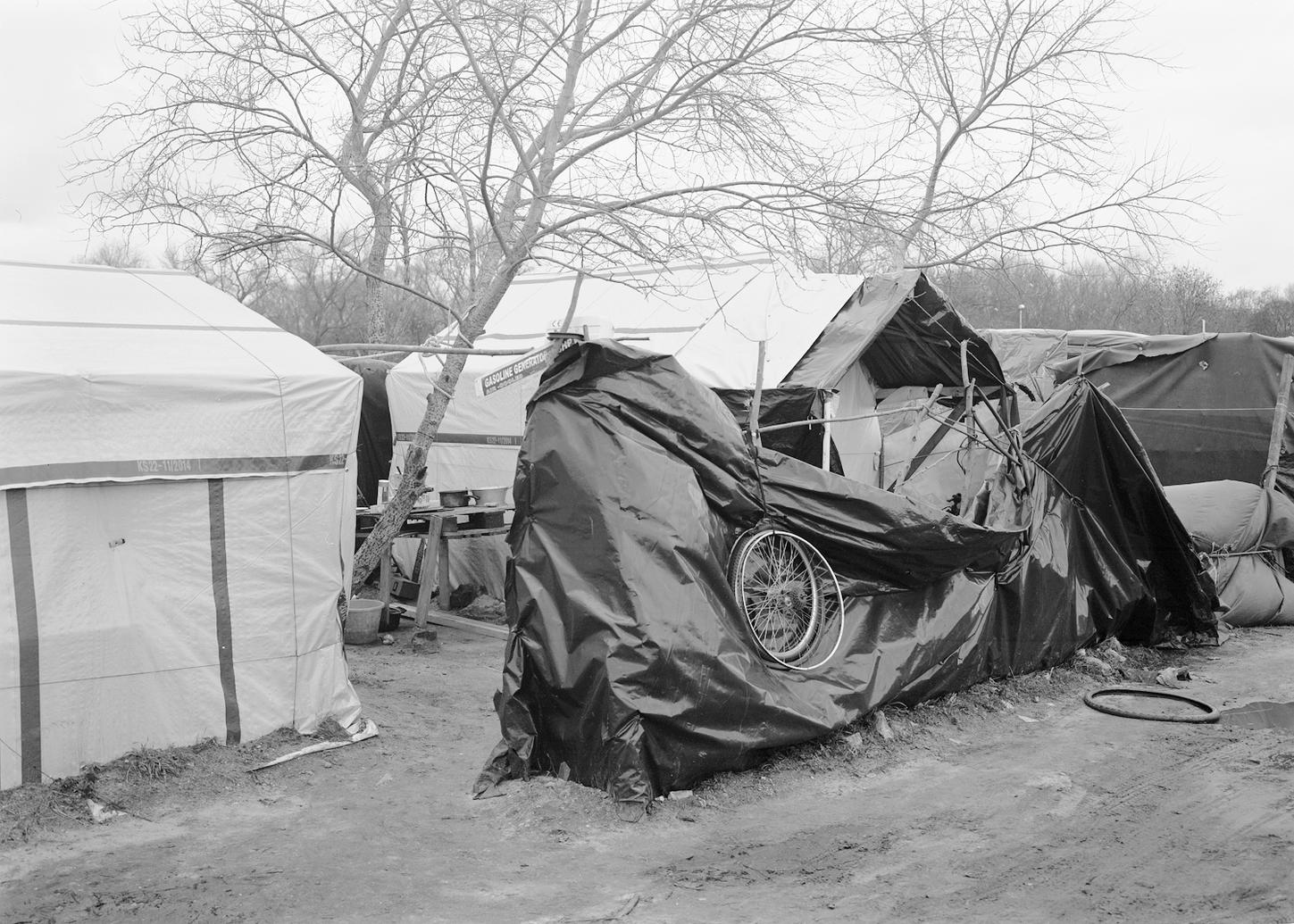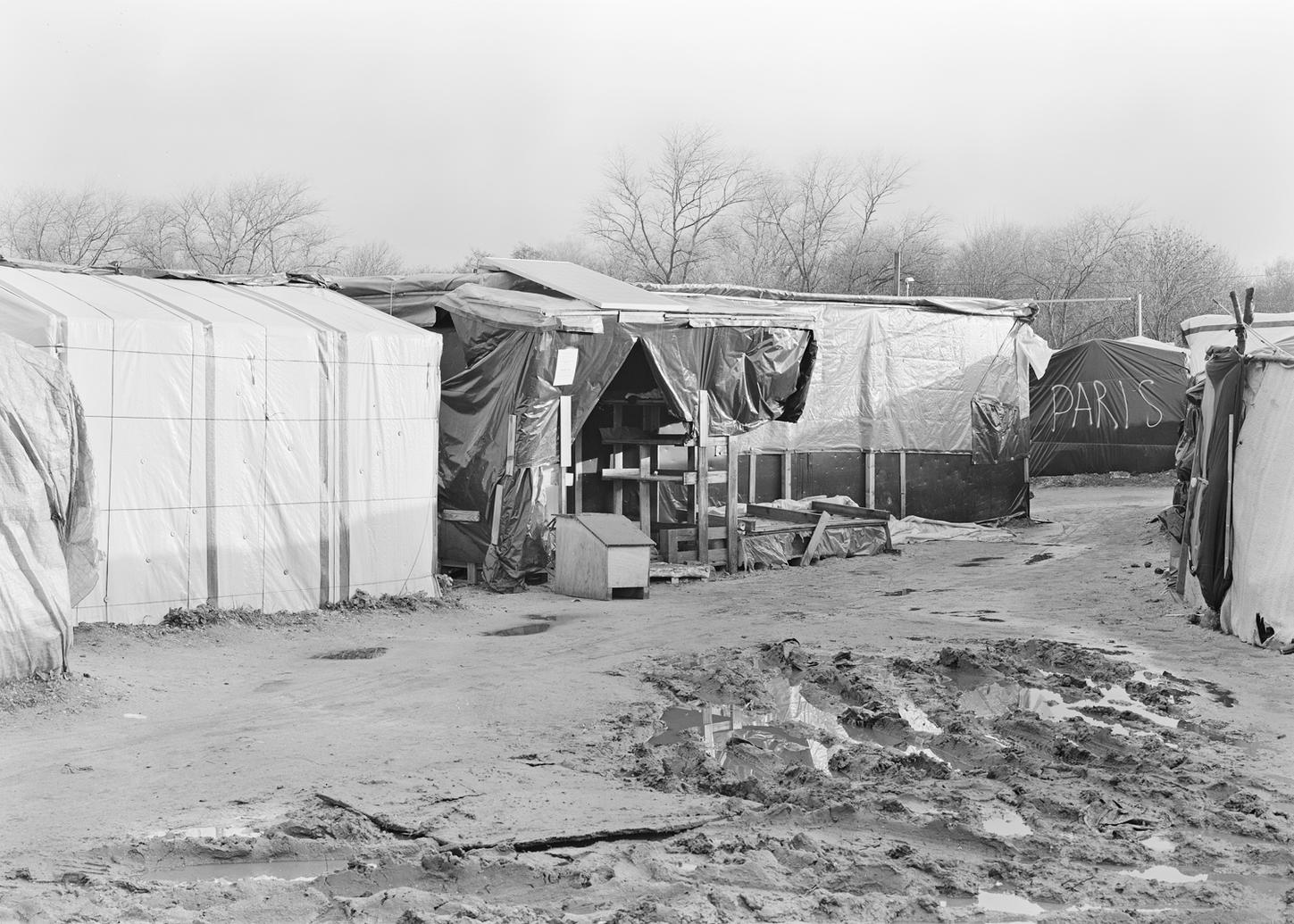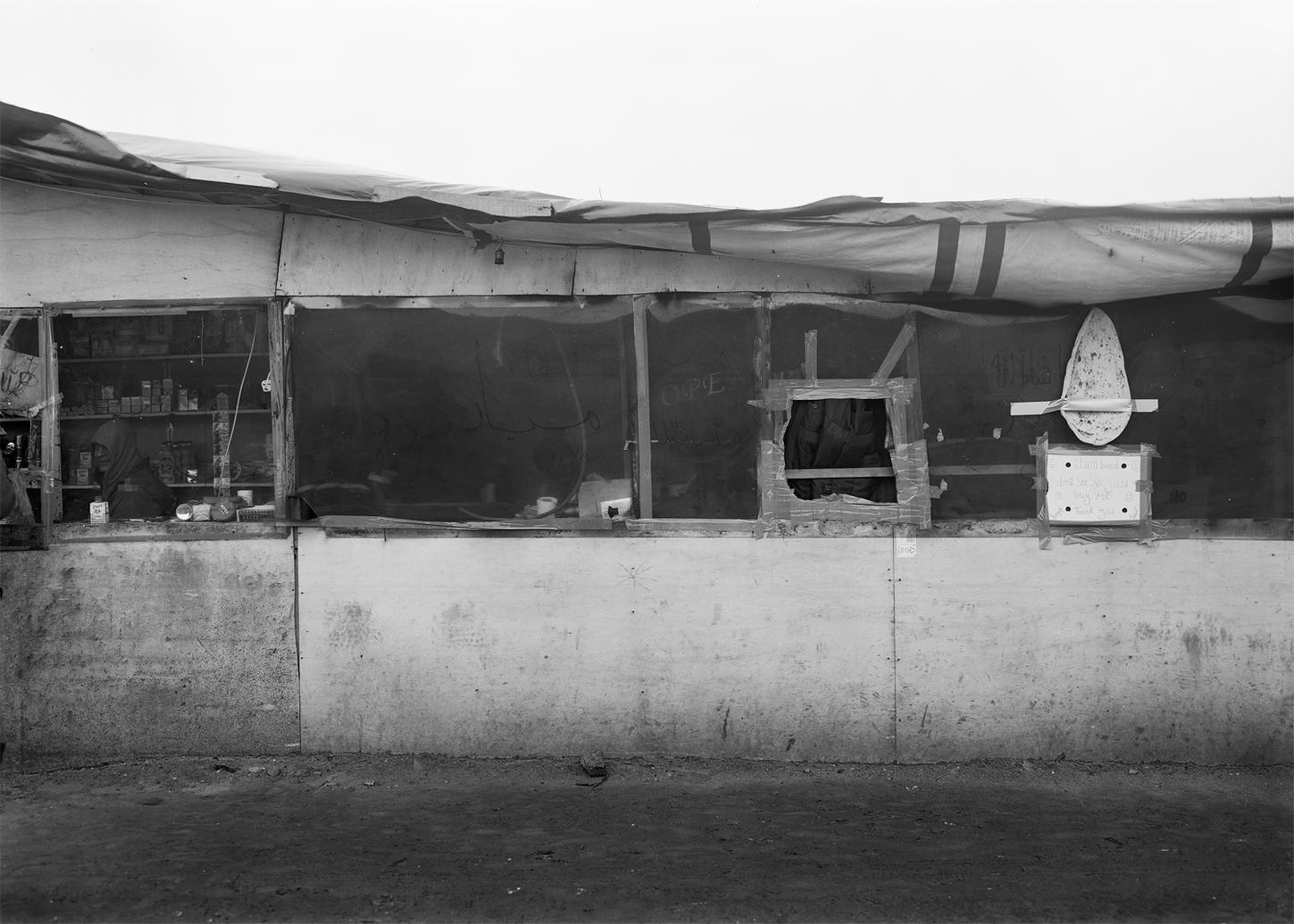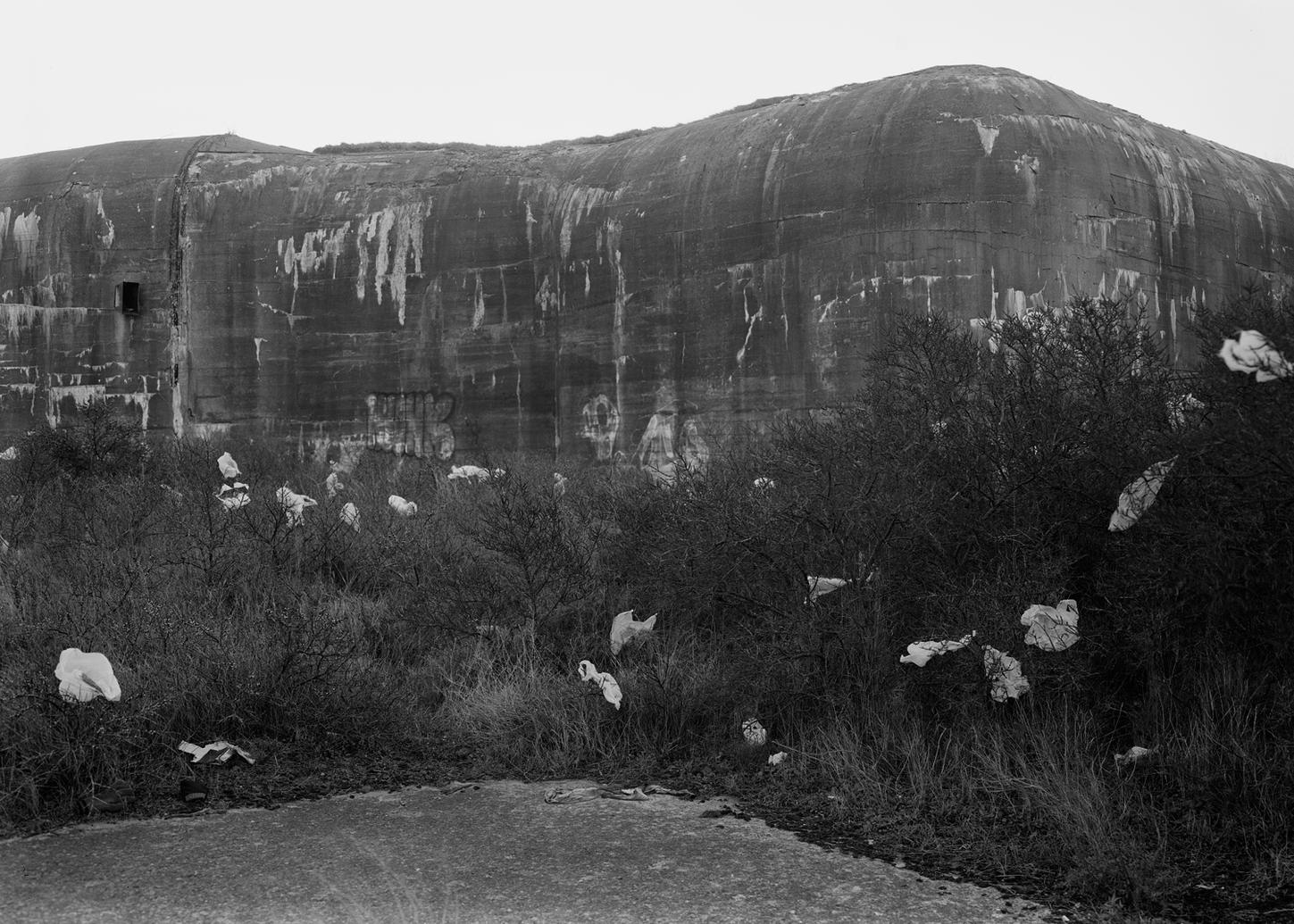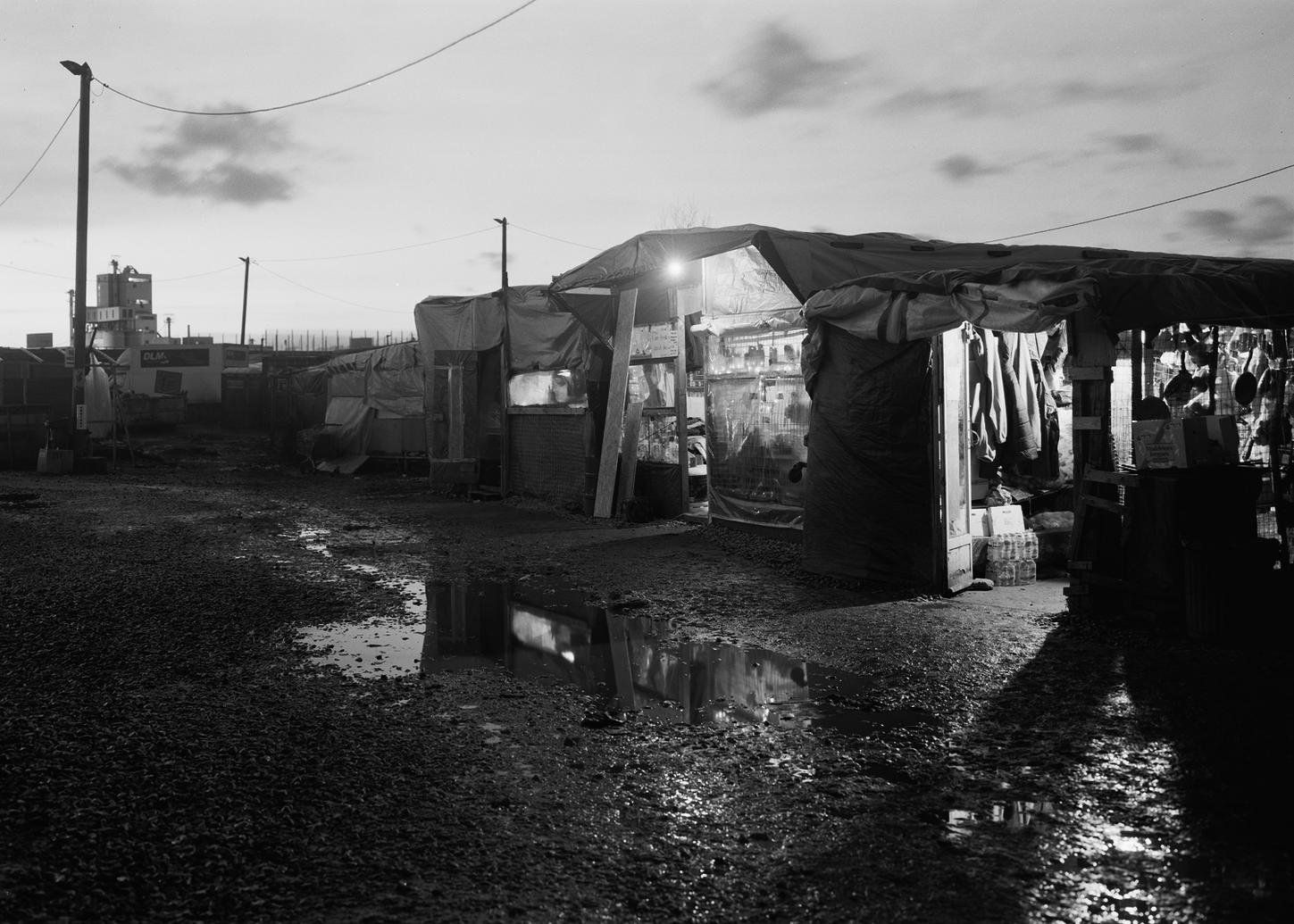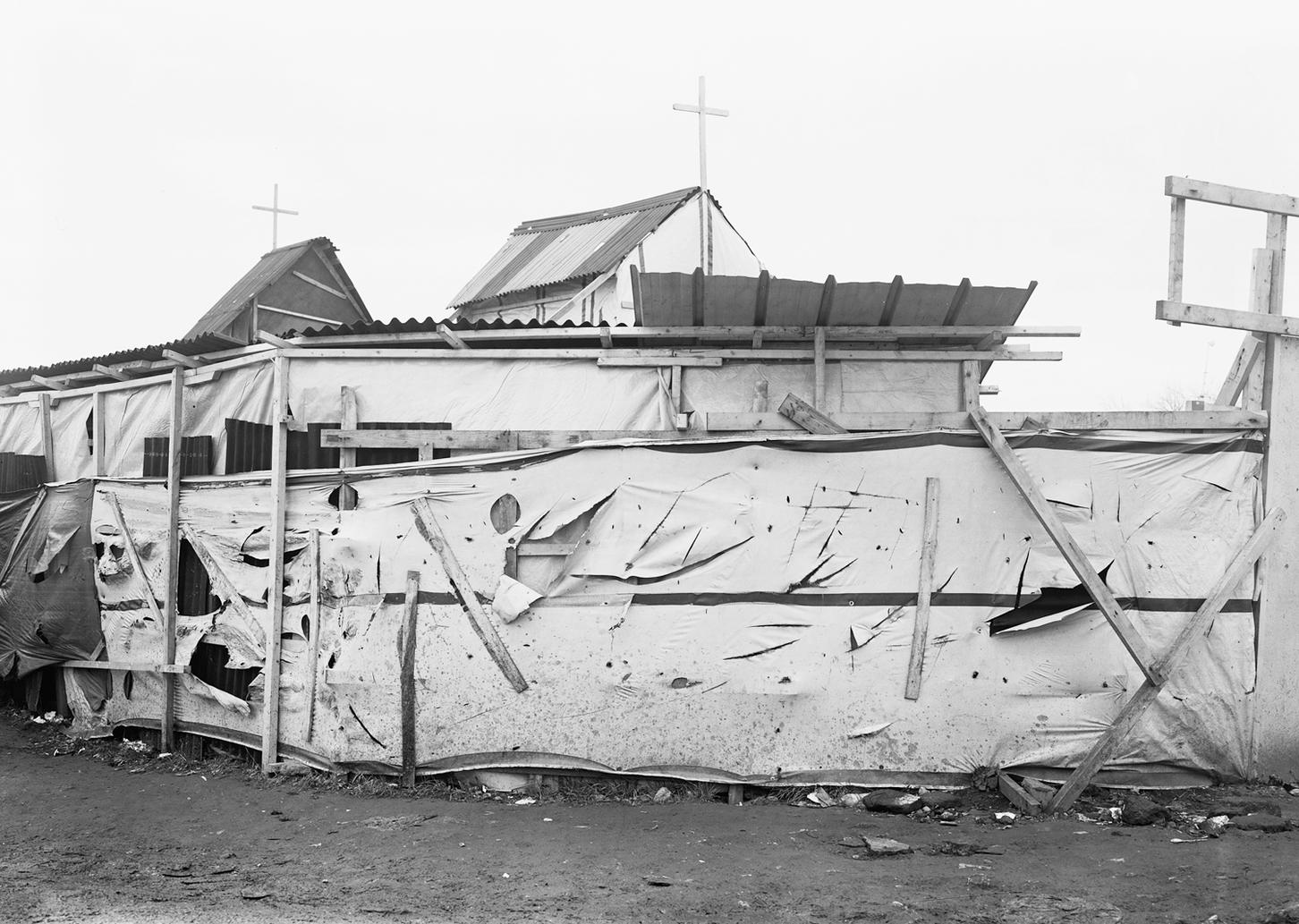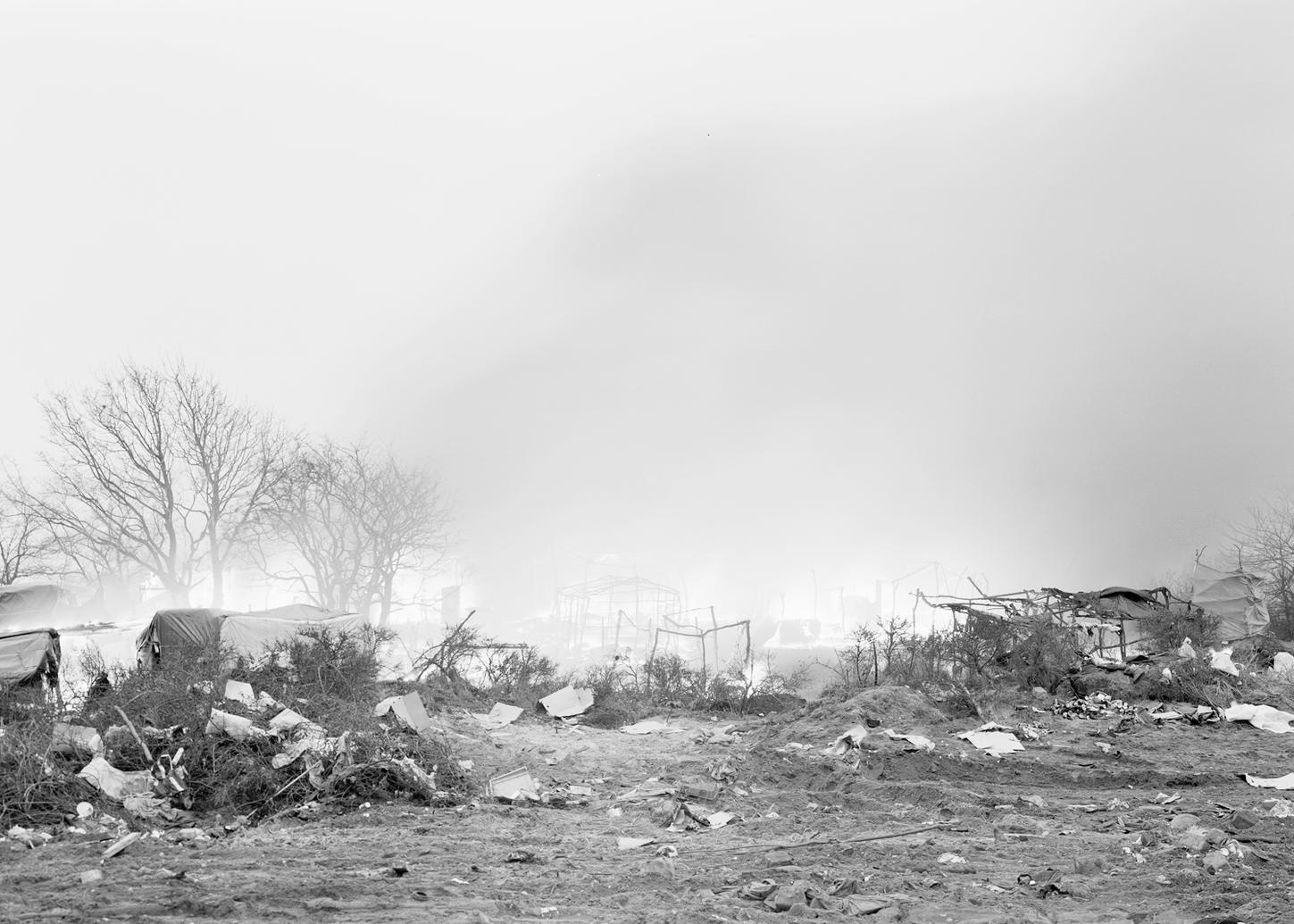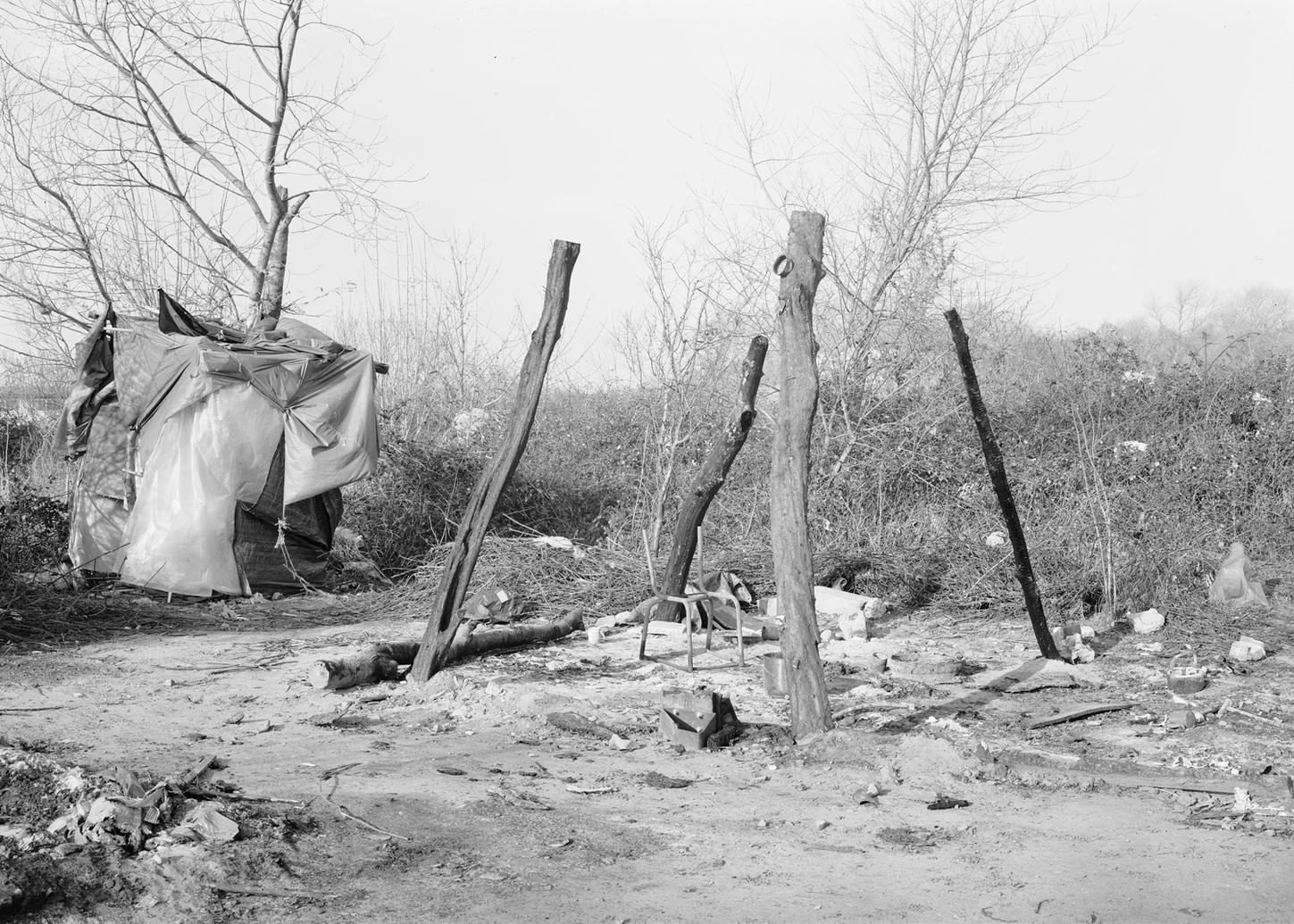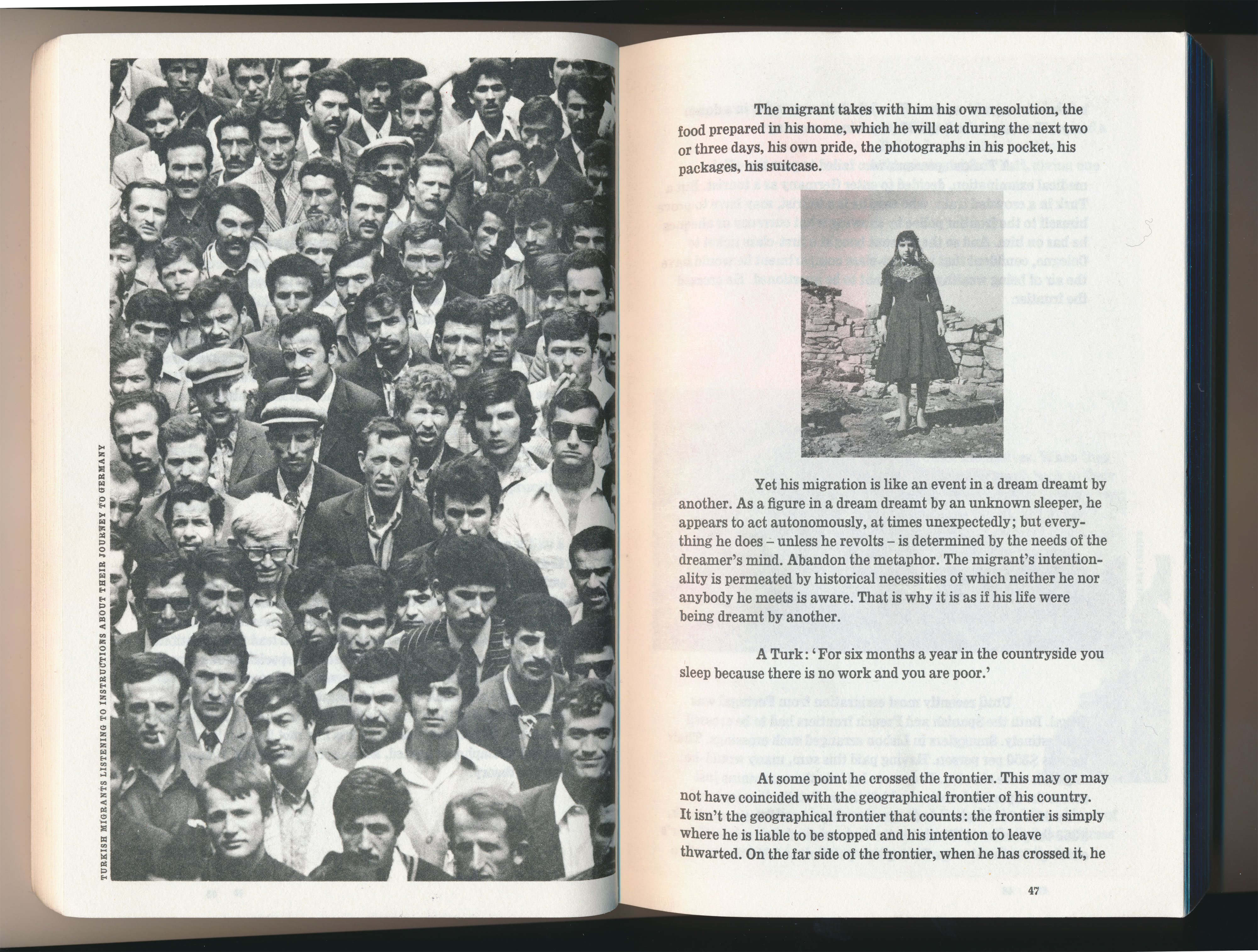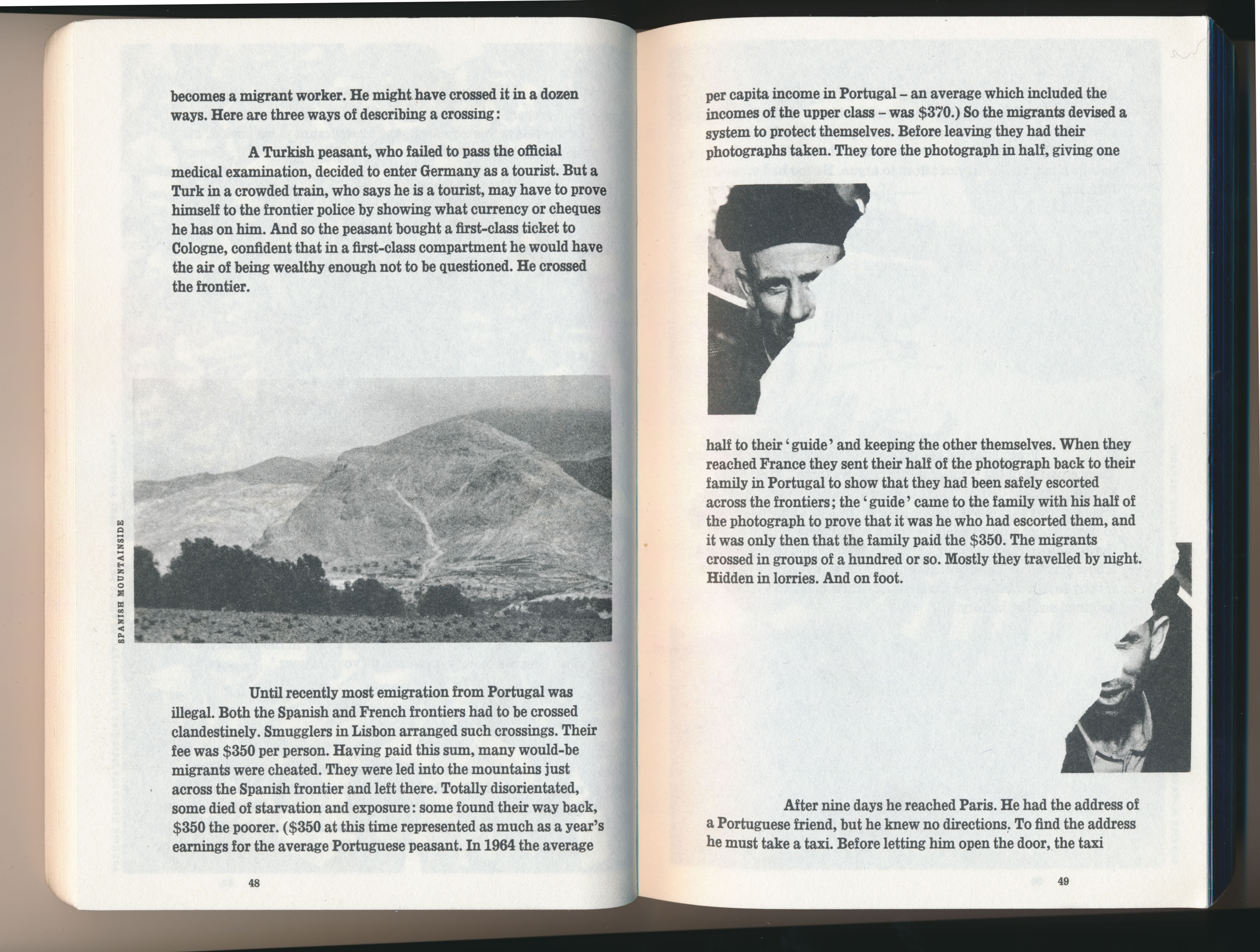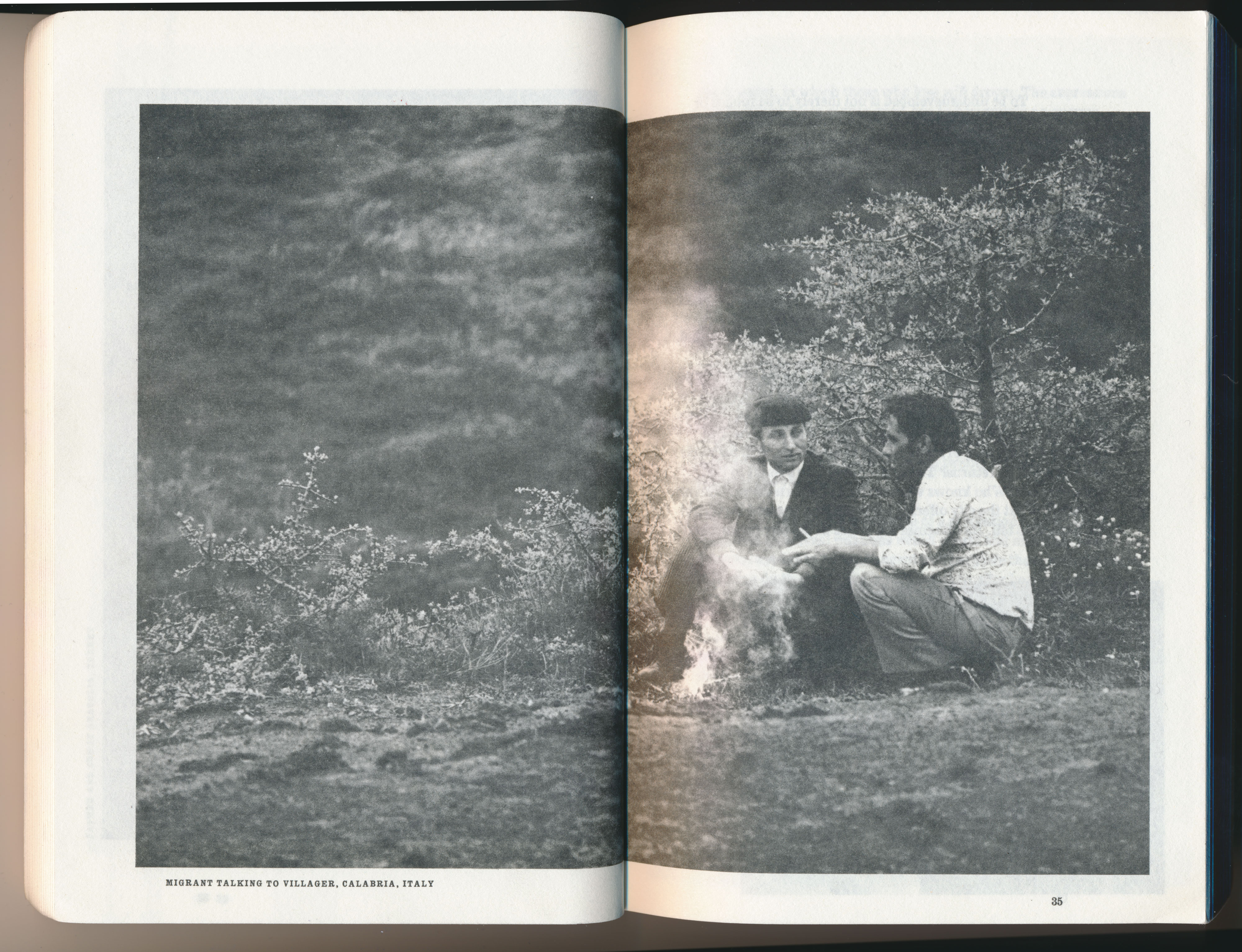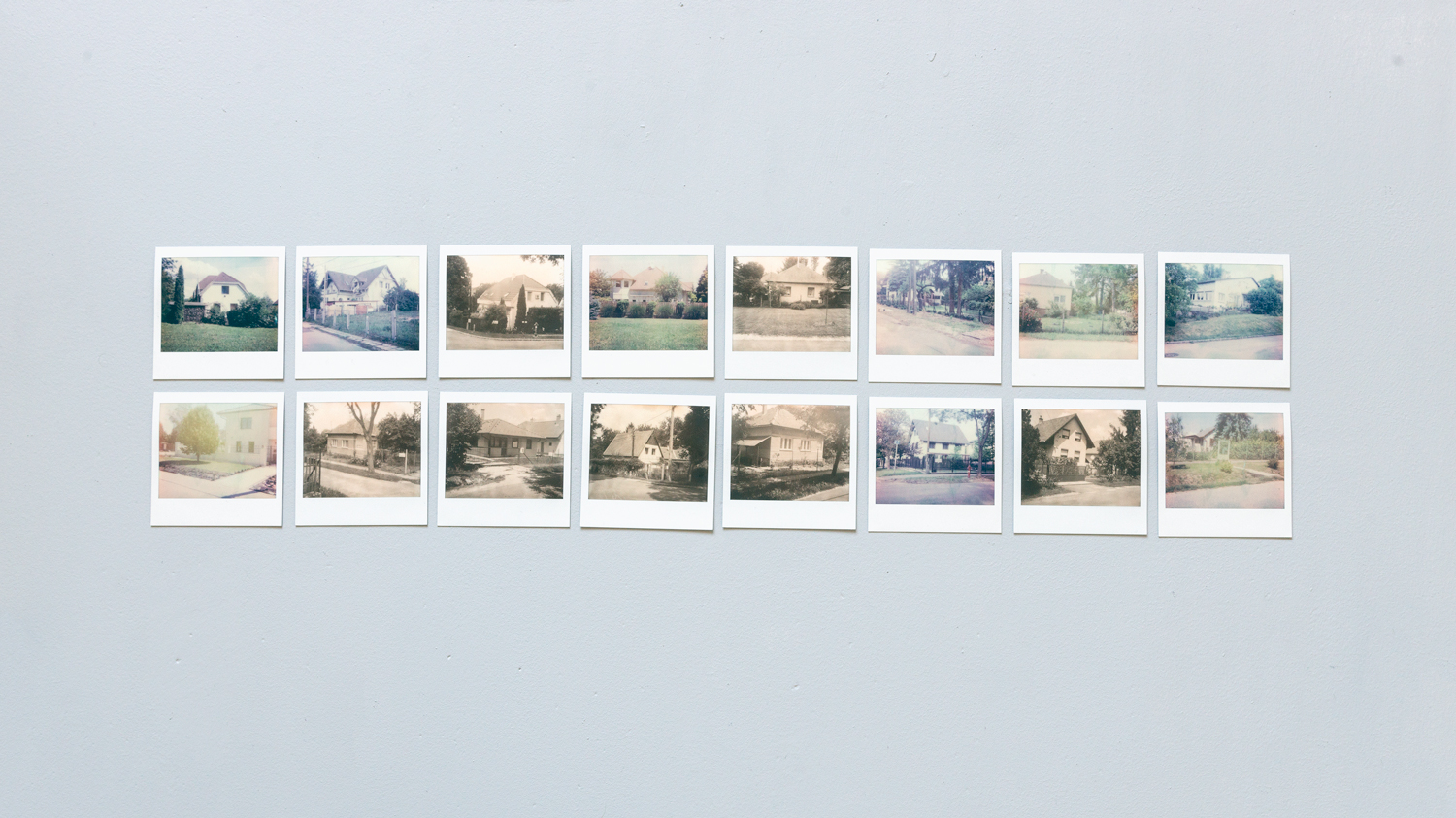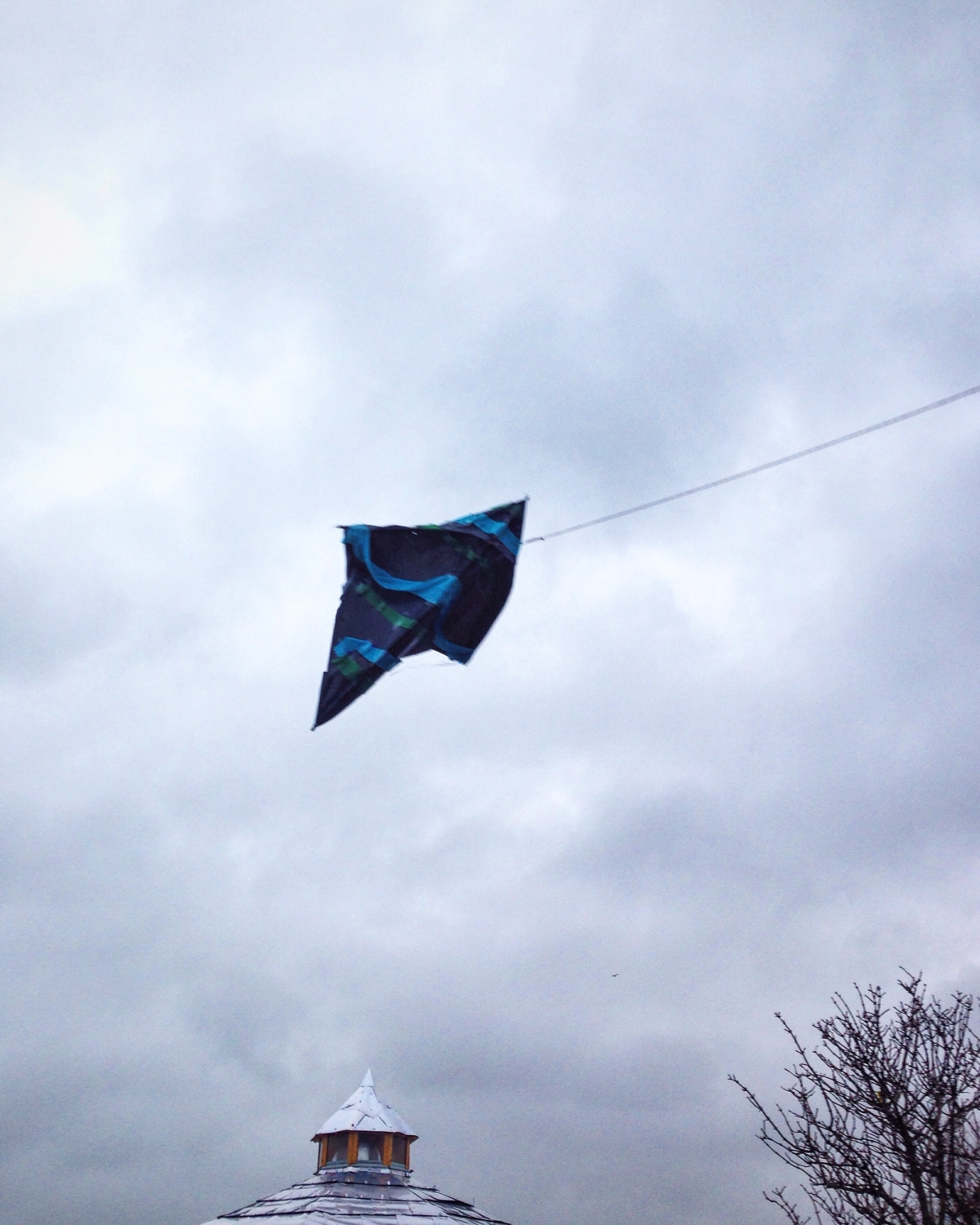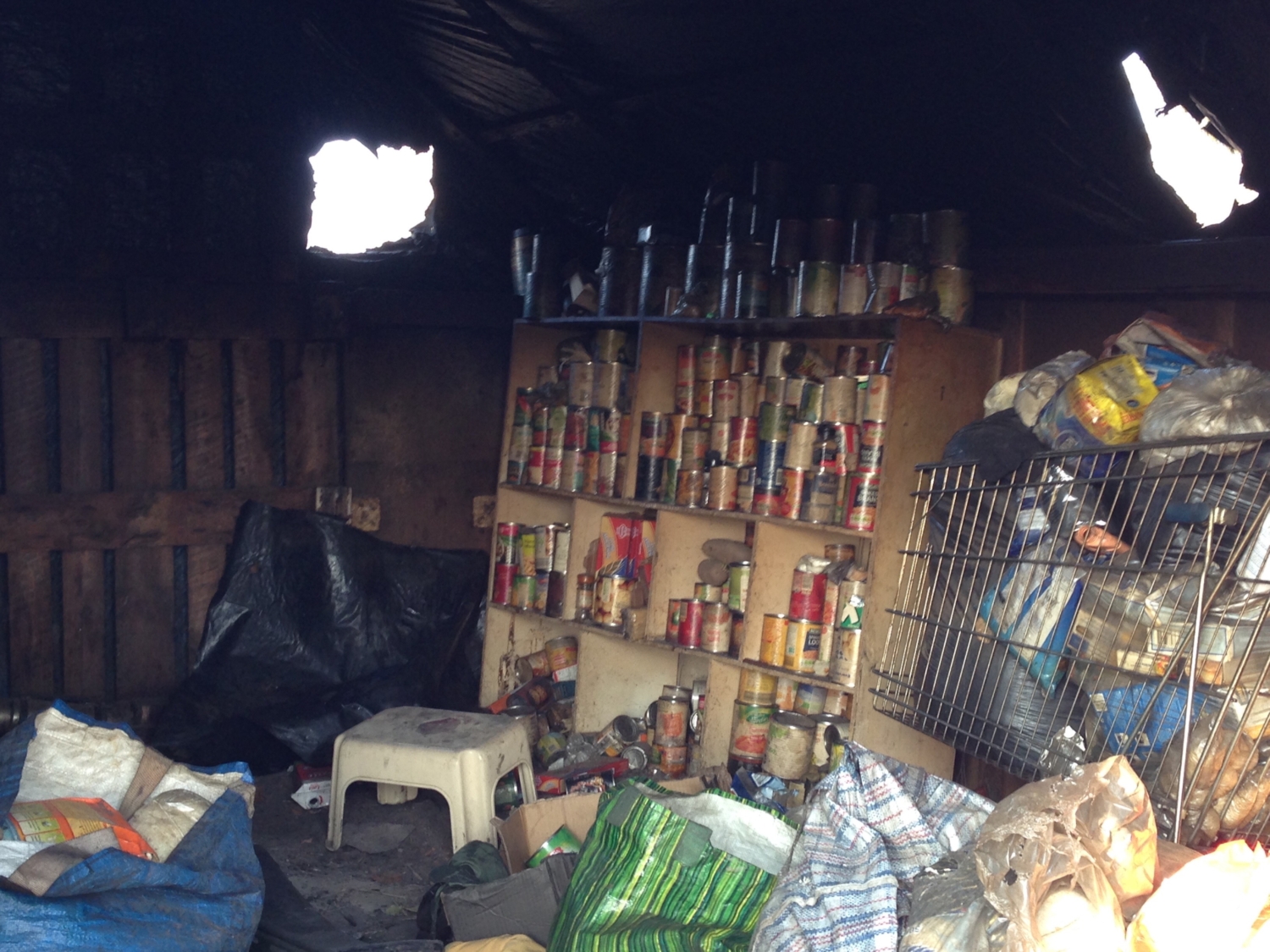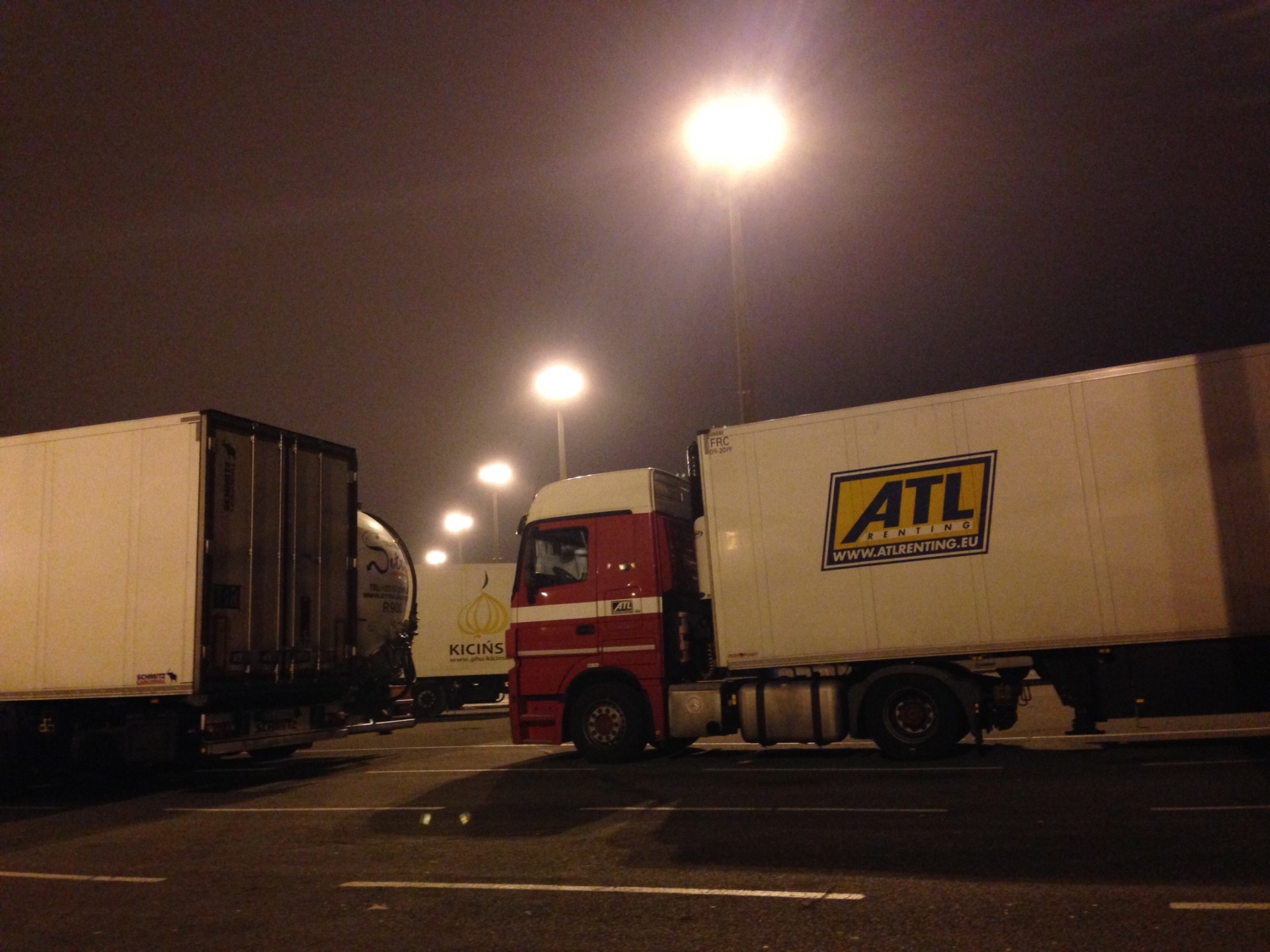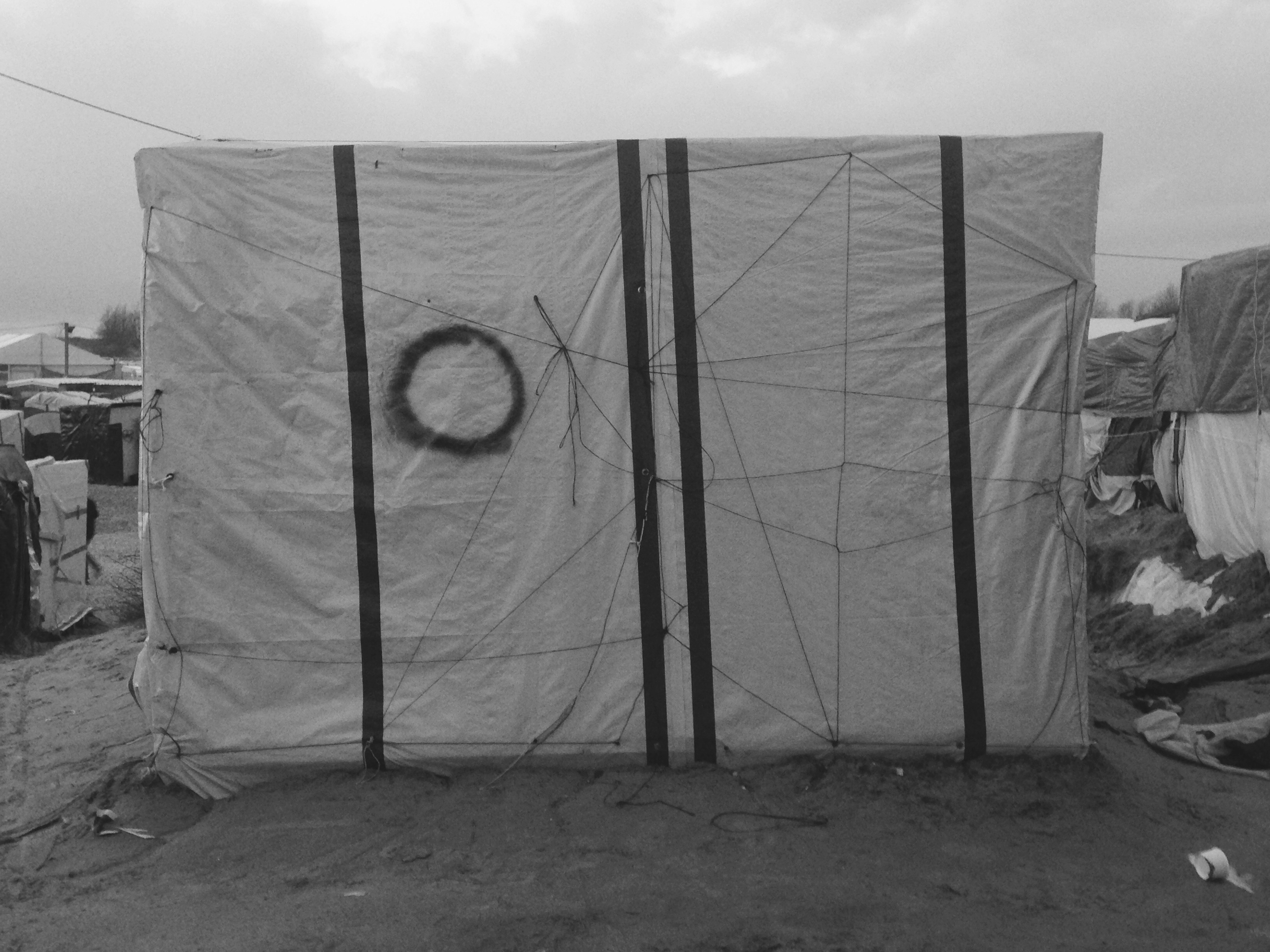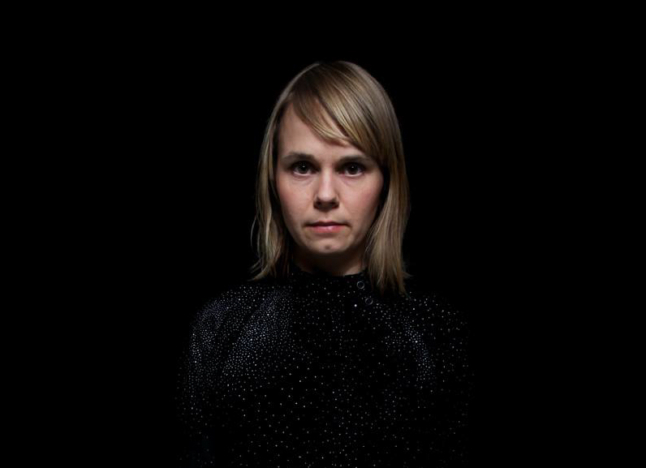Alex Christopher Williams
Artist Feature
Every week an artist is featured whose single image was published by Der Greif. The Feature shows the image in the original context of the series.
Tom Hatton - Now Here
Nov 28, 2018
»Now Here« 2016 employs the language of large format tableau photography to provide an alternative witness to the Calais Refugee Camp in northern France. With the topic of immigration so high on the political agenda following the Paris attacks and prior to the Brexit referendum the collective image of the camp became heavily saturated with sensational and politically polarising content. Most of which focused on the camp’s potential threat to the UK and France. The aim of this project was to deconstruct these associated connotations and instead demand a careful reconsideration of the place and its inhabitants. Due to laws on the asylum process, as well as existing representational issues with otherness, I decided to focus on the absence of refugees. By removing any expected focal points but instead revealing the shops, restaurants, schools and places of worship alongside shelters and various discarded objects, the photographs deconstruct the layers of fear that had accumulated surrounding the camp and the figure of the refugee. It is through this use of absence that the photographs demand the construction of new narratives that place emphasis on the unseen conditions of exile.
Artist Blog
The blog of Der Greif is written entirely by the artists who have been invited to doing an Artist-Feature. Every week, we have a different author.
Published in:
»Guest-Room Tiina Rauhala«
Now Here, Super 8
Dec 04, 2018 - Tom Hatton
This super 8 film was shot in the Calais refugee camp in February 2016 just before the southern half of the camp was dismantled. Similar to the photographs the video was shot in black and white to create a separation from what was already, in most cases, falsely known about the Jungle.
Absence, Photography & Migration / John Berger – The Seventh Man
Dec 02, 2018 - Tom Hatton
“To try to understand the experience of another it is necessary to dismantle the world as seen from one’s own place within it, and to reassemble it as seen from his. […] The world has to be dismantled and re-assembled in order to be able to grasp, however clumsily, the experience of another. To talk of entering the other’s subjectivity is misleading. The subjectivity of another does not simply constitute a different interior attitude to the same exterior facts. The constellation of facts, of which he is at the centre, is different.”
John Berger, The Seventh Man (Verso, 2010 – pg 97-98)
This post presents some excerpts from John Berger and Jean Mohr’s The Seventh Man. Although it was produced in 1973-74 – the year the UK first joined an early version of the EU – there are still many relevant elements worth considering within our current context of migration.
“He looks for the photo among the over-handled papers, stuffed in his jacket. He finds it. In handing it over, he imprints his thumb on it. Almost deliberately, as a gesture of possession. A woman or perhaps a child. The photo defines an absence, Even if it is ten years old it makes no difference. It holds open, preserves the empty space which the sitter’s presence will, hopefully, one day fill again. He puts it immediately back in his pocket without glancing at it. As if there were a need for it in his pocket.”
“At some point he crossed the frontier. This may or may not have coincided with the geographical frontier of his country. It isn’t the geographical frontier that counts: the frontier is simply where he is liable to be stopped and his intention to leave thwarted. On the far side of the frontier, when he has crossed it, he becomes a migrant worker. He might have crossed it in a dozen ways.”
The | Our Homes, Hungary (ongoing project 2018)
Dec 01, 2018 - Tom Hatton
These polaroids are from an ongoing project ‘Long Torn by Ill Fate’ (2018-), based in Hungary. Taken while searching for a location for a larger image, these polaroids generate an odd sense of nostalgia and an eeriness which is reinforced by the relatively loose typological serialisation.
The Cultural Politics of Emotion / Sara Ahmed + Petra Laszlo
Nov 30, 2018 - Tom Hatton
“… I may express my feelings: I may laugh, cry, or shake my head. Once this inside has got out, when I have expressed my feelings in this way then my feelings become yours, and you may respond to them. If you sympathise, then we might have ‘fellow feeling’ (Denzinn 1984: 148). If you don’t understand, we might feel alienated from each other. (Scheff 1994:3). The logic here is that I have feelings, which then move outwards towards objects and others, and which might then return to me. …”
Sara Ahmed, The Cultural Politics of Emotion, 2004, [pg8-9]
For this post I will present some excerpts from Sara Ahmed’s book ‘The Cultural Politics of Emotion’. I discovered this text after making the project and it has begun to inform a new series. Her writing is extremely relevant to the discourse on, and the representation of otherness and also the transference of emotion between bodies, (to use her terminology). Just for the sake of clarity, the image-text juxtaposition is my own. These two images document a clash between migrants and police (and journalist Petra Laszlo) on the Hungarian / Serbian border in September 2015, prior to the construction of the border fence. Following this moment she tripped up at least one other person, a child running with her family. Laszlo was fired from her job but was later acquitted of a criminal act and imprisonment.
“Most of our ideas and tendencies are not developed by ourselves but come to us from without. How can they become a part of ourselves except by imposing themselves upon us? (Durkeim 1966:4) […] Durkeim considers the rise of emotions in crowds, suggesting that such ‘great movements’ of feeling, ‘do not originate’ in any one of the particular individual consciousnesses’ (Durkeim 1966:4) Here, the individual is no longer the origin of feeling; feeling itself comes from without. Durkeim’s later work on religion suggests that such feelings do not remain ‘without.’ As he notes: ‘This force must also penetrate us and organise itself within us; it thus becomes an integral part of our being and by that very fact this is elevated and magnified.’ (Durkeim 1976: 209) For Durkeim then, emotion is not what comes from the individual body, but is what holds or binds the social body together. (Collins 1990: 27)”
Sara Ahmed, The Cultural Politics of Emotion, 2004, [pg 9]
from Chapter 1: The Contingency of Pain. These passages specifically examine the dynamics of the representation of pain and suffering.
” … The ‘anger’ and ‘sadness’ the reader should feel when faced with the other’s pain is what allows the reader to enter into a relationship with the other, premised on generosity rather than indifference. The negative emotions of anger and sadness are evoked as the reader’s: the pain of other’s becomes ‘ours’, an appropriation that transforms and perhaps even neutralises their pain into our sadness. It is not so much that we are ‘with them’ by feeling sad; the apparently shared negative feelings do not position the reader and victim in a relation of equivalence, or what Elizabeth V. Spelman calls co-suffering. (Spelman 1997:65) ”
[…]
” … ‘Compassion, like other forms of caring, may also reinforce the very patterns of economic and political subordination responsible for such suffering.’ (Spelman 1997:7)
[…]
The overrepresentation of pain of others is significant in that it fixes the other as the one who ‘has’ pain, and who can overcome that pain only when the western subject feels moved enough to give.’
Sara Ahmed, The Cultural Politics of Emotion, 2004, [pg 21 – 22]
A Few Other Images..
Nov 29, 2018 - Tom Hatton
These were taken when in the Camp in early 2016 and were made with a small camera phone. I’ve never shown them before but thought it would be fitting to show them in the context of this blog, alongside the research below, and as a counterpoint to the black and white images above.



